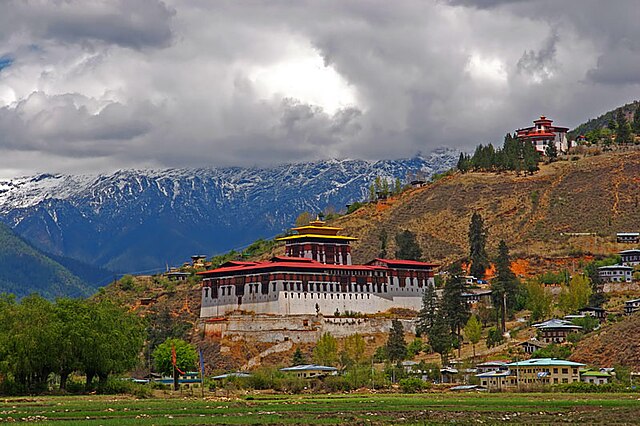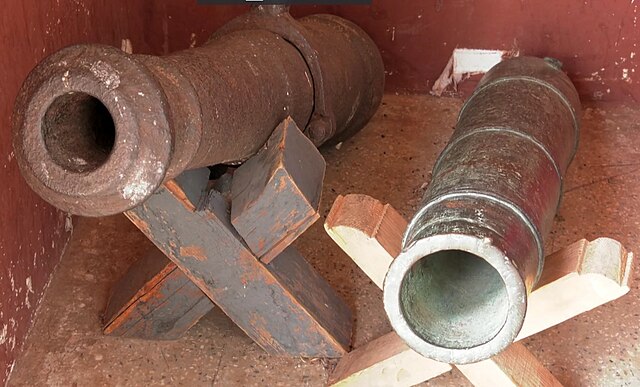The Treaty of Punakha was an agreement signed on 8 January 1910, at Punakha Dzong between the recently consolidated Kingdom of Bhutan and British India. The Treaty of Punakha is not a stand-alone document, but represents a modification of the Treaty of Sinchula of 1865, the prior working agreement between Bhutan and British India. As such, the Treaty of Punakha is an amendment whose text incorporates all other aspects of the Treaty of Sinchula by reference.
Punakha Dzong, where the Treaty of Punakha was enacted
Bhutan, officially the Kingdom of Bhutan, is a landlocked country in South Asia situated in the Eastern Himalayas between China in the north and India in the south. With a population of over 727,145 and a territory of 38,394 square kilometres (14,824 sq mi), Bhutan ranks 133rd in land area and 160th in population. Bhutan is a constitutional monarchy with a king as the head of state and a prime minister as the head of government. Vajrayana Buddhism is the state religion and the Je Khenpo is the head of the state religion.
The dzong in the Paro valley, built in 1646
The Portuguese cannons in the National museum of Paro.
Trashigang Dzong, built in 1659
Sketch of Bhutan's interior, 1783





